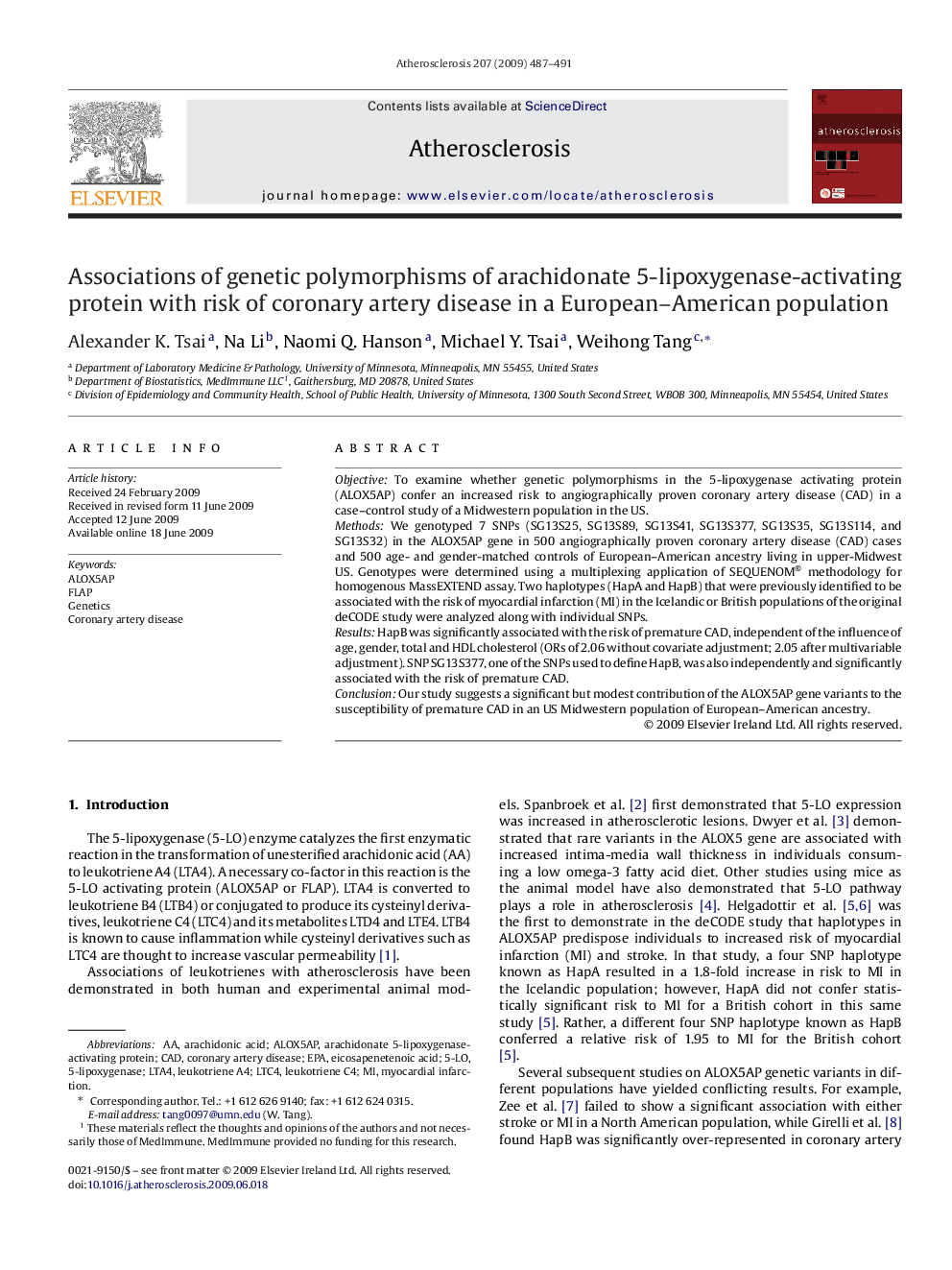| Article ID | Journal | Published Year | Pages | File Type |
|---|---|---|---|---|
| 2893379 | Atherosclerosis | 2009 | 5 Pages |
ObjectiveTo examine whether genetic polymorphisms in the 5-lipoxygenase activating protein (ALOX5AP) confer an increased risk to angiographically proven coronary artery disease (CAD) in a case–control study of a Midwestern population in the US.MethodsWe genotyped 7 SNPs (SG13S25, SG13S89, SG13S41, SG13S377, SG13S35, SG13S114, and SG13S32) in the ALOX5AP gene in 500 angiographically proven coronary artery disease (CAD) cases and 500 age- and gender-matched controls of European–American ancestry living in upper-Midwest US. Genotypes were determined using a multiplexing application of SEQUENOM® methodology for homogenous MassEXTEND assay. Two haplotypes (HapA and HapB) that were previously identified to be associated with the risk of myocardial infarction (MI) in the Icelandic or British populations of the original deCODE study were analyzed along with individual SNPs.ResultsHapB was significantly associated with the risk of premature CAD, independent of the influence of age, gender, total and HDL cholesterol (ORs of 2.06 without covariate adjustment; 2.05 after multivariable adjustment). SNP SG13S377, one of the SNPs used to define HapB, was also independently and significantly associated with the risk of premature CAD.ConclusionOur study suggests a significant but modest contribution of the ALOX5AP gene variants to the susceptibility of premature CAD in an US Midwestern population of European–American ancestry.
